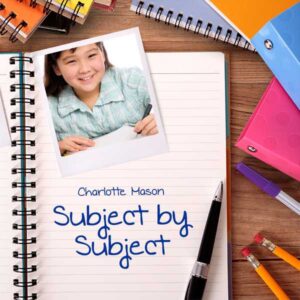60-day returns • free shipping on USA orders $129+


When we talk about writing, we usually have one or both of these aspects in mind: handwriting and composition. Let’s look at each one and outline how Charlotte Mason approached them.
Handwriting
Charlotte taught handwriting through the method of copywork.
Copywork is pretty much what the name implies: the student copies something. In a Charlotte Mason school that “something” is interesting quality poetry or quotes or Scripture or excerpts from literature that the child copies to practice good penmanship. The selection should give the child a living idea to ponder even as he works to copy it in his best handwriting.
Lessons are short, with an emphasis on quality over quantity. In fact, when the children are just learning how to form the letters, one perfectly executed letter is the goal of the lesson. As their proficiency grows, that goal can be expanded to three or six perfect letters and then a line or a sentence. But mindless repetition has no place in Charlotte’s handwriting lessons.
Young ones, who are just beginning to learn their letters, are encouraged to draw in sand or on the chalkboard, learning a simple stroke and then the letters that use that stroke. As soon as possible, those learned letters are combined into words so the writing exercise will have more interest and communicate an idea.
For an example of how those beginning writing lessons might look, check out The Charlotte Mason Handwriting Series.
Composition
Charlotte taught composition through the method of narration.
Since the majority of composition is mental work, Charlotte focused on that part of the process during the earlier grades, while the children are still learning how to form their letters and practice writing with ease. We already discussed the method of narration when we talked about teaching history. Charlotte used that method for many subjects; and while it is a fabulous tool for learning, it is also a solid foundation for composition. In fact, oral narration can also be called oral composition.
Once the children are proficient and comfortable with oral narration, you can begin to introduce some written narration, usually around the age of ten. They are already experienced in the mental process of organizing and expressing their thoughts, now they just need to take the next step and put those organized thoughts on paper.
Charlotte was a firm believer in letting the children develop their own unique styles, because she knew they would be well acquainted with a variety of wonderful writing styles from the great literature they had been using throughout their school years. They would pick up a little from one great author and a little from another and mix it together with their own personalities. Such a method is consistent with her priority of respecting the child as a person. Formulaic writing is eschewed.
When the children are comfortable and proficient with getting their organized thoughts on paper, you help them polish their writing skills by focusing on just one or two points that they need to improve on. That point is explained and corrected in their work, then they focus on mastering it in future written narrations. Once it is mastered, they work on another point or two. In this way, composition is not taught as a separate subject, but is intertwined with other subjects’ narrations.
That is the approach to composition that is integrated in our Using Language Well series. Each teacher book contains a set of rubrics, assignments, and teaching tips that give practical guidance in helping your child grow in composition through the years.
Writing, spelling, and reading are all components of language arts. You might find the video, The Natural Progression of Language Arts, a good overview to see how Charlotte Mason methods help the student gently and naturally progress in the art of using language well.
If you would like an in-depth look at language arts in a Charlotte Mason approach, Hearing and Reading, Telling and Writing contains all the fascinating details we found in Charlotte’s writings, including sample written narrations.
Podcast: Play in new window | Download

This is a great article Sonya, thank you! I loved the way you explained the process from oral narration to written narration, and then eventually working on specific areas in writing for the student to improve and master. It reminds me of working on habits, one at a time.
We always love your help! Thanks soooo much 🙂 Reese homschool